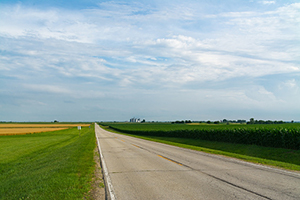A study published by Longacre et al in The Journal of Rural Health found that patients with breast cancer in the rural United States typically travel three times farther than those who live in urban areas for radiation therapy.

Photo credit: Getty
Researchers examined data from the Surveillance, Epidemiology, and End Results–Medicare database. More than 52,000 women diagnosed with breast cancer between 2004 and 2013 were included in the cohort. The data were used to determine where the women lived and the location of the facility where they received radiation therapy, and Google Maps was used to calculate the distance the women traveled for their treatment.
Results
Patients living in rural areas traveled, on average, nearly three times as far as women living in urban areas for radiation treatment: 40.8 miles vs 15.4 miles. The nearest radiation facility for rural women was, on average, four times farther away than for urban women: 21.9 miles vs 4.8 miles.
“Radiation treatment is not just a one-time thing,” said first study author Colleen F. Longacre, MPH. “Conventional radiotherapy requires treatment 5 days per week for 5 to 7 weeks at a time. This means that the average rural woman [undergoing treatment for breast cancer in the United States] logs more than 2,000 miles of travel over the course of treatment.”
The authors also found that the severity (stage, grade) of the cancer was not associated with how far women chose to travel for care; people who chose to travel to a clinic farther away than the nearest facility were typically younger, married, or from higher-income areas; and that women who were older, single or widowed, and from lower-income areas chose to travel shorter distances for treatment.
KEY POINTS
- Patients living in rural areas traveled, on average, nearly three times as far as women living in urban areas for radiation treatment: 40.8 miles vs 15.4 miles.
- The nearest radiation facility for rural women was, on average, four times farther away than for urban women: 21.9 miles vs 4.8 miles.
- The severity (stage, grade) of the cancer was not associated with how far women chose to travel for care.
“Basically, how far someone travels for treatment says more about the person than [his or her] cancer,” said Ms. Longacre.
The study authors concluded, “In this insured population, travel distance to radiation facilities may pose a significant burden for [patients with breast cancer], particularly among those living in rural areas. Policymakers and patient advocates should explore service delivery models, reimbursement models, and social supports aimed at reducing the impact of travel to radiation treatment for [patients with] breast cancer.”
Disclosure: For full disclosures of the study authors, visit onlinelibrary.wiley.com.

